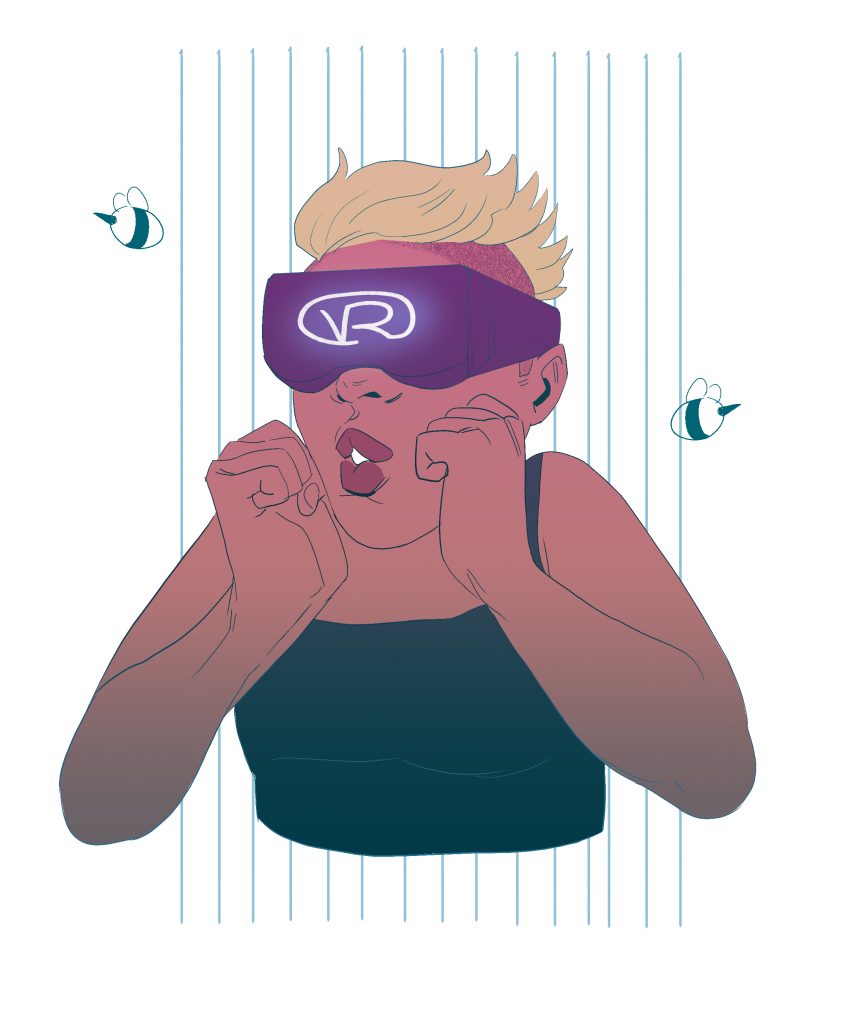Virtual reality for therapy: Ground breaking technologies for treating mental illness

Virtual Reality (VR) has become all the rage in recent years and as design and art students, students should pay attention to how this technology evolves and the potentials it has to create visually stunning and immersive experiences.
VR has been known to make groundbreaking changes to the education and gaming industry. Some of its contributions are to the fields of therapy and psychological research. Researchers, psychologists, scientists and designers alike all work together to create VR technology to treat mental illness. While results vary on whether VR treatment is more effective than actual therapy, putting patients in VR scenarios allows therapists to observe and guide them through situations that otherwise would, impractically, require the therapists to follow patients in real life. Two of the most common VR applications in treating mental illnesses are exposure therapy and cognitive behavioral therapy.
Exposure therapy
One of the most accepted uses of VR for mental illness is exposure therapy (ET) to treat phobias.
BBC produced a video investigation using VR to treat acrophobia — the extreme or irrational fear of height. In a simulation, the patient would enter into an elevator going upwards and stop at each floor for breaks. Liz Willits was the patient who tried the technology in the video. With acrophobia, she fears she would fall over the edge even when only slightly high up. She experienced the same symptoms of anxiety she felt in real life situations, like sweaty hands. However, she said she felt braver because she knew she was safe.
This is an example of ET. In the same video, clinical psychologist Dr. Nihara Krause explained in the therapy. Krause stated, “People are exposed to situations that they are fearful of, that they are avoiding,” and that could “help people manage their automatic fear response, their physiological response” by becoming desensitized to their responses through repeated, incremental exposures under positive feedbacks (such as encouragements). Clinical psychologist and paranoia expert Dr. Daniel Freeman said, “What they basically do is learning a new memory of safety around height, and that new memory is replacing and help to diminish the fear memory that she had.”
Cognitive behavioral therapy and mindfulness
Psychologists also use VR for cognitive behavioral therapy (CBT). This therapy is more complex than ET but also a common practice used to treat mental illness epidemics such as depression, bipolar disorder, borderline personality disorder and more.
An article published by Psychology Today detailed that CBT is a method in which “patients have the opportunity to work with a therapist to find the source of negative thinking and transform those thoughts into a positive, growth mindset.” The “cognitive” component is to detect and analyze why and how patients have these negative thoughts, and the behavioral component comes in when therapists help them to replace these “negative thoughts and actions with productive behaviors that make the individual feel equipped to overcome any difficult moment.” Students who have gone to the student counseling center regularly most likely have undergone CBT. Some negative thoughts analyzed and subsequently countered by positive thoughts might include forcing ourselves to see that one bad grade does not mean that we as artists have failed, but perhaps that our tastes and styles are different from our professor — that the bad grade was an individual case separated from our abilities as artists.
Under stressful conditions, patients with social anxiety often jump too quickly to distorted conclusions, such as concluding people that look at them are judging them. They internalize the looks as signs that onlookers can tell how awkward and anxious they feel, which in their mind mean they are unworthy and inadequate. To counter the patients’ black-and-white thinking and introduce more nuances into the thought process, psychologists put patients in a simulated public space, such as on a bus or train — common triggers for anxieties — and include one or two virtual avatars that give patients the “dismissive glance.” Instead of merely internalizing their self-hatred, the patient would then select their thoughts in a pop-up menu verbalizing intangible feelings such as “people don’t like me.”
This helps the patient to capture their reactions in an objective way. The therapist asks the patient to challenge their conclusions, such as trying to analyze why people are dismissive — is it because they were in pain and stressed, therefore externalizing their feelings? They propose the “dismissive glance” as an ambiguous gesture more than a conclusive one. Patients learn that the glance does not always entail judgment and contempt. A component of mindfulness also comes into play when therapists asks patients to capture their thoughts and let them “stay” in their minds without judgment. Patients then learn to accept the thoughts’ existence without equating the patients’ feelings to their identity.
With VR technology, therapists are also able to better track patients’ physical reactions (such as increased heart rate) and degree of anxiety as they encounter fearful scenarios — conditions therapists are unlikely to see unless they follow patients in real life. Not only do therapists get a better understanding of their patients’ illness, they could also suggest patients how to react. For autistic patients, therapists can ask them to stop “safety behaviors,” such as avoiding eye contact in social gatherings or job interviews. Autistic patients also learn how to read social cues.
As Google, Apple, Microsoft and other Silicon Valley companies experiment with and polish their VR technology, we will be sure to see more and more exciting VR applications. As artists and designers, many of us struggle with perfectionism, creative blocks and notoriously, mental illness. VR is a good way to apply our skill sets and help causes that deeply affect our communities. Pay attention to the potentials and opportunities this technology offers.

























